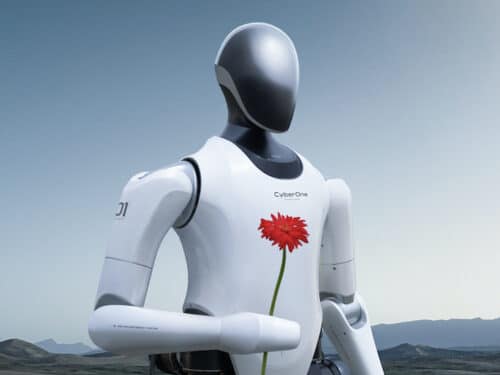Xiaomi’s first humanoid robot can detect human emotion and create virtual reconstructions of the real world.
Humanoid robots are robots that resemble human body shape. But what it could actually understand us, the humans. Xiaomi’s first humanoid robot CyberOne possesses some abilities that can develop such human machine connectivity. CyberOne can detect human emotion, advanced vision capabilities, and functionality that allows it to create 3D virtual reconstructions of the real world.

“CyberOne’s AI and mechanical capabilities are all self-developed by Xiaomi Robotics Lab. We have invested heavily in R&D spanning various areas, including software, hardware, and algorithms innovation,” says Lei Jun, Founder, Chairman, and CEO of Xiaomi Group. “With AI at its core and a full-size humanoid frame as its vessel, this is an exploration of possibilities of Xiaomi’s future technological ecosystem and a new breakthrough for the company.”
CyberOne is 177cm high and weighs 52kg. It is more complex compared to a four-legged robot as it requires more powerful motors, more degrees of freedom, and complex humanoid biped control algorithms, all of which allow it to fully simulate human movements.
Humanoid robots depend on vision to process their surroundings. And so does CyberOne, it is equipped with a self- developed Mi-Sense depth vision module. It has a combined AI interaction algorithm making it capable of perceiving 3D space, as well as recognizing individuals, gestures, and expressions. The robot is equipped with a self-developed MiAI environment semantics recognition engine and a MiAI vocal emotion identification engine, allowing it to recognize 85 types of environmental sounds and 45 classifications of human emotion.

The R&D process consists of a variety of cutting edge technologies from a variety of technology sectors including bionic perception and cognition, biomechatronics, artificial intelligence, big data and cloud computing, and visual navigation.






